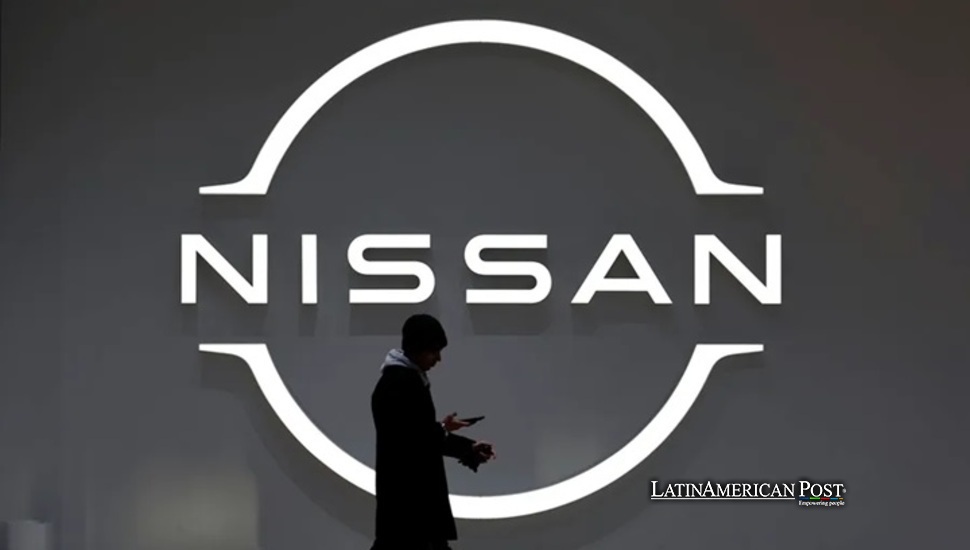Mexico Nissan Alliance Uncertain as Automaker Faces Worldwide Headwinds

As U.S. tariff threats loom, Mexico’s president Claudia Sheinbaum warns that Nissan’s exit would be costly, jeopardizing its sizable local market. At the same time, the Japanese car firm has obstacles in electric plans and working with others in addition to profit gains. These issues complicate its long-term links with Mexico.
Sheinbaum’s Warning and the Arduous 25% Tariff
The chorus of alarm bells started ringing when U.S. President Donald Trump reiterated his promise to impose a 25% tariff on vehicles entering the United States from Mexico. This looming measure triggered caution among automakers whose cross-border supply chains keep American and Mexican factories humming. However, one voice stood out from the usual political or economic commentary: Mexico’s president, Claudia Sheinbaum, bluntly admonished Nissan that leaving Mexico over tariff fears would forfeit its access to the vast domestic market.
Sheinbaum made these remarks in her daily briefing, calling attention to Nissan’s decades-long presence in Mexico. “People often say these multinational companies come here to export cars back to the U.S., but in reality, Nissan’s massive plant in Aguascalientes mostly supplies vehicles to our national market,” she insisted. Should Nissan pull out, Sheinbaum said, it would be ceding a significant slice of local car demand to competitors. The message was unequivocal: any abrupt exit in reaction to U.S. tariff threats risked hurting Nissan’s brand and bottom line in Mexico, which stands among the world’s most crucial auto manufacturing hubs.
Even though Sheinbaum is combative, Nissan chief Makoto Uchida describes a similar outcome when Trump’s trade policy comes into force. Uchida states, “If tariffs rise high, we switch production.” Leaving Mexico ultimately appears excessive; the option to move certain production lines remains real. Nonetheless, Sheinbaum’s retort—quoted in local media—practically dared Nissan to reconsider. The matter, she said, was not just about the U.S. but about sustaining a Latin American stronghold that has been decades in the making. As it stands, Mexican automotive exports to the U.S. could become cost-prohibitive if Trump’s tariff plan surfaces. But Sheinbaum’s gambit suggests Nissan may lose more by leaving.
Meanwhile, this tariff debate is closely tied to the entire Mexican automotive sector, which accounts for roughly 4% of the country’s GDP and a fifth of manufacturing activity. Export figures plunged over 13% year-on-year last January alone, and further disruptions risk compounding a fragile outlook. President Sheinbaum’s rhetorical flourish underscores the stakes. She wants companies like Nissan to stay—helping maintain local jobs and investment—while urging them not to ignore Mexico’s domestic demand. Will Nissan yield to these external trade winds or trust its deep roots in Mexico?
Nissan’s Storied Mexican Legacy
When Nissan arrived in 1961, few might have guessed it would evolve into one of the dominant players in Mexico’s automotive sector. By 1966, the company opened its first manufacturing plant outside Japan in Cuernavaca, commonly called CIVAC. Over time, additional engine and powertrain facilities sprouted in Aguascalientes, eventually becoming Nissan’s proud central hub for production in Latin America.
According to historical data, Nissan has manufactured over 14 million vehicles in Mexico and exported to over 80 global markets since 1972. Notable nameplates like the Sentra, March, Kicks, and NP300 are wholly or partially assembled in Mexico. While these models serve foreign customers, Sheinbaum’s broader point is that a substantial portion is sold within the country. Many Mexican drivers have grown up with Nissan’s brand. “We’re deeply woven into the fabric of this market,” said a representative from Nissan Mexico in a prior corporate statement.
Most recently, Nissan Mexico embarked on an ambitious product refresh, refining or entirely redesigning 60% of its lineup to incorporate more advanced technology, improved safety features, and expanded connectivity. This was in response to intensifying competition as U.S. and Chinese automakers vie for an edge in the region. Even with that momentum, the brand’s local dominance faces fresh challenges, from the global shift to electrics to changing consumer tastes. Yet, Nissan remains integral to the national car-buying psyche—something that Sheinbaum aims to leverage in the face of looming tensions with Washington.
As Nissan grapples with an evolving business landscape—particularly the push toward electrification—it continues forging ties with local Mexican agencies and supply networks. Over the decades, the carmaker has nurtured generations of local engineering talent, developed synergy with parts suppliers, and anchored vital job creation in states like Aguascalientes. Abandoning that social, infrastructural, and brand capital is not so straightforward. Despite the external shock of proposed tariffs, Sheinbaum argues that local realities can still tip the scale in favor of staying put.
Honda Deal Fizzles, Tariffs Loom
Externally, Nissan faces more than the U.S.-Mexico tariff standoff; the company has seen significant internal upheavals and global setbacks. Past months brought about the failure of a planned arrangement with Honda, which was first announced in December. A Nissan statement said the break came from focusing on fast decisions in a fast-changing market and Honda’s plan to turn Nissan into a part of its company. The break shows Nissan’s weak alliances. Plans for synergy around R&D and electrification have unraveled, leaving Nissan more vulnerable as it pivots into an EV-driven era.
Makoto Uchida, Nissan’s chief executive, told reporters the automaker must be ready for “all options without taboo” to ensure survival. Nissan’s profits severely slid this year: from 325 billion yen ($2.1 billion) last period to a meager 5.1 billion yen ($33 million) for the nine-month window. The situation triggered radical cost-cutting measures, including a plan to slash 6,500 jobs in the U.S. and Thailand. The company aims to reduce global vehicle output by a million units by 2026. Meanwhile, the stock has dipped around 25% in the past year—outpacing the 15% fall for rival Honda.
One factor is Nissan’s sluggish entry into the electric space, a domain where Chinese manufacturers and Tesla are outpacing them worldwide. Meanwhile, policy changes mean Nissan’s EV offerings no longer qualify for specific U.S. tax incentives. As a result, the brand is losing key American market share. With a battered global position, the automaker needs stable footholds. Precisely, Sheinbaum’s stance gains weight: Mexico remains a historically stable fortress. If Nissan abandons it, the damage might exceed the hit from any near-term tariffs.
Trump’s repeated vow to impose 25% duties on Mexican cars is intended to spook companies like Nissan. But Sheinbaum contends that such a policy might be ephemeral, or at least surmountable—mainly if Mexico invests in domestic consumption. Indeed, the local middle class is large enough that many Japanese, U.S. and European brands see Mexico as a self-sustaining market. Sheinbaum’s logic: even if new tariffs hamper U.S. exports, Nissan can thrive by reorienting further toward Mexican buyers, possibly intensifying its brand loyalty. She also alludes to an interest in boosting hybrid production domestically. She suggests that if Nissan invests in Mexico’s pivot toward greener motoring, it can future-proof local business.
The Road Ahead for Nissan’s Mexican Future
Does Nissan see Sheinbaum’s words as a sign to stay in Mexico and set up its local base to counter U.S. instability? The firm keeps its guard up. Uchida names a possible move of production; no clear plan shows a quick exit. Nissan takes steps to adjust its work structure. Its bond with a supply network shaped over many years in Mexico or a plan to produce hybrid or electric cars may deliver a lineup that wins in local and regional markets. Risk reduction does not drive the choice; the decision meets changing consumer tastes.
Moreover, it’s not just about mitigating risk; it’s about synergy with evolving consumer demands. Younger drivers in Mexico are showing a growing interest in lower-emission vehicles, especially if government incentives or city-level pollution controls become stricter. Nissan’s significant capital investments, technical staff, and corporate identity in Mexico aren’t easily replicated in Southeast Asia or Eastern Europe. Granted, the impetus behind any near-term changes depends on how likely the United States will enact or maintain that steep 25% tariff. However, Nissan’s global challenges—especially with tepid profits and a struggling EV strategy—leave little room for additional shocks or abrupt relocations.
A question about the automotive industry’s broader shift is at the heart of this standoff. Years ago, multinational car manufacturers saw Mexico primarily as an export hub, thanks to cost advantages and favorable trade deals like NAFTA (renegotiated under USMCA). If Trump’s tariff threats erode those advantages, automakers might pivot elsewhere. Yet Sheinbaum wagers that Mexico’s consumer base is robust enough that fleeing might not serve Nissan’s long-term interest.
Right now, Nissan must consider several connected matters: keep a presence in the U.S. market, review broken partnerships with companies such as Honda, channel funds toward a series of better battery-powered cars, and hold on to customer trust in Latin America. Sheinbaum has staked a clear rhetorical position: if Nissan abandons its deep roots in Mexico, it could face stiff competition for its substantial automotive demand. The balancing act is delicate for the brand—side too strongly with the “escape the tariffs” argument, and they risk losing ground among the tens of thousands of Mexican consumers who buy a Nissan each year.
The car market changes fast. Nissan faces troubles when outside forces upset its plans. Sheinbaum gives a clear sign, and Mexico shows trust because its people buy many cars at home. Nissan stayed there for many years. Stopping now brings more worry than it appears. This act adds to the car maker’s long fight with electric engines, plus attempts at cost cuts. The risk grows.
Also Read: Mexico’s Vaping Ban and BAT’s Reaction, Concerns, and Potential Ramifications
No 25 % U.S. tax or plan change severs Nissan’s bond with Mexico, a tie that lasted five decades. The decision does more than bring quick money losses; it marks a safe route in a field that shifts constantly. According to Sheinbaum, letting go of buyers from Mexico takes away a benefit that kept the company in its home market for fifty years. Whether or not the brand yields to the White House’s demands, the message remains plain: Mexico’s leadership stands ready to defend local markets, urging manufacturers to invest more deeply in a place that has extended them a warm welcome—and has, in turn, become integral to their success.




